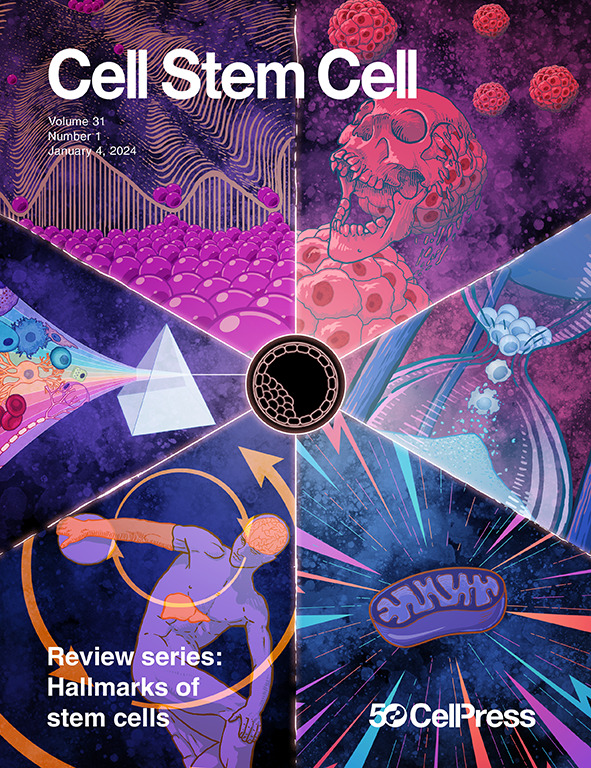Multiomic profiling reveals that prostaglandin E2 reverses aged muscle stem cell dysfunction, leading to increased regeneration and strength
IF 20.4
1区 医学
Q1 CELL & TISSUE ENGINEERING
引用次数: 0
Abstract
Repair of muscle damage declines with age due to the accumulation of dysfunctional muscle stem cells (MuSCs). Here, we uncover that aged MuSCs have blunted prostaglandin E2 (PGE2)-EP4 receptor signaling, which causes precocious commitment and mitotic catastrophe. Treatment with PGE2 alters chromatin accessibility and overcomes the dysfunctional aged MuSC fate trajectory, increasing viability and triggering cell cycle re-entry. We employ neural network models to learn the complex logic of transcription factors driving the change in accessibility. After PGE2 treatment, we detect increased transcription factor binding at sites with CRE and E-box motifs and reduced binding at sites with AP1 motifs, overcoming the changes that occur with age. We find that short-term exposure of aged MuSCs to PGE2 augments their long-term regenerative capacity upon transplantation. Strikingly, PGE2 injections following myotoxin- or exercise-induced injury overcome the aged niche, leading to enhanced regenerative function of endogenous tissue-resident MuSCs and an increase in strength.

多组学分析显示,前列腺素E2逆转衰老肌肉干细胞功能障碍,导致再生和力量增加
由于功能失调的肌肉干细胞(musc)的积累,肌肉损伤的修复能力随着年龄的增长而下降。在这里,我们发现衰老的musc已经减弱了前列腺素E2 (PGE2)-EP4受体信号,这导致了早熟的承诺和有丝分裂灾难。使用PGE2治疗可改变染色质可及性,克服功能失调的老年MuSC命运轨迹,增加活力并触发细胞周期重新进入。我们使用神经网络模型来学习驱动可及性变化的转录因子的复杂逻辑。在PGE2处理后,我们检测到CRE和E-box基序位点的转录因子结合增加,AP1基序位点的结合减少,克服了随年龄变化而发生的变化。我们发现衰老的MuSCs短期暴露于PGE2增强了它们移植后的长期再生能力。引人注目的是,在肌毒素或运动诱导的损伤后注射PGE2克服了老化的生态位,导致内源性组织常驻musc的再生功能增强和强度增加。
本文章由计算机程序翻译,如有差异,请以英文原文为准。
求助全文
约1分钟内获得全文
求助全文
来源期刊

Cell stem cell
生物-细胞生物学
CiteScore
37.10
自引率
2.50%
发文量
151
审稿时长
42 days
期刊介绍:
Cell Stem Cell is a comprehensive journal covering the entire spectrum of stem cell biology. It encompasses various topics, including embryonic stem cells, pluripotency, germline stem cells, tissue-specific stem cells, differentiation, epigenetics, genomics, cancer stem cells, stem cell niches, disease models, nuclear transfer technology, bioengineering, drug discovery, in vivo imaging, therapeutic applications, regenerative medicine, clinical insights, research policies, ethical considerations, and technical innovations. The journal welcomes studies from any model system providing insights into stem cell biology, with a focus on human stem cells. It publishes research reports of significant importance, along with review and analysis articles covering diverse aspects of stem cell research.
 求助内容:
求助内容: 应助结果提醒方式:
应助结果提醒方式:


